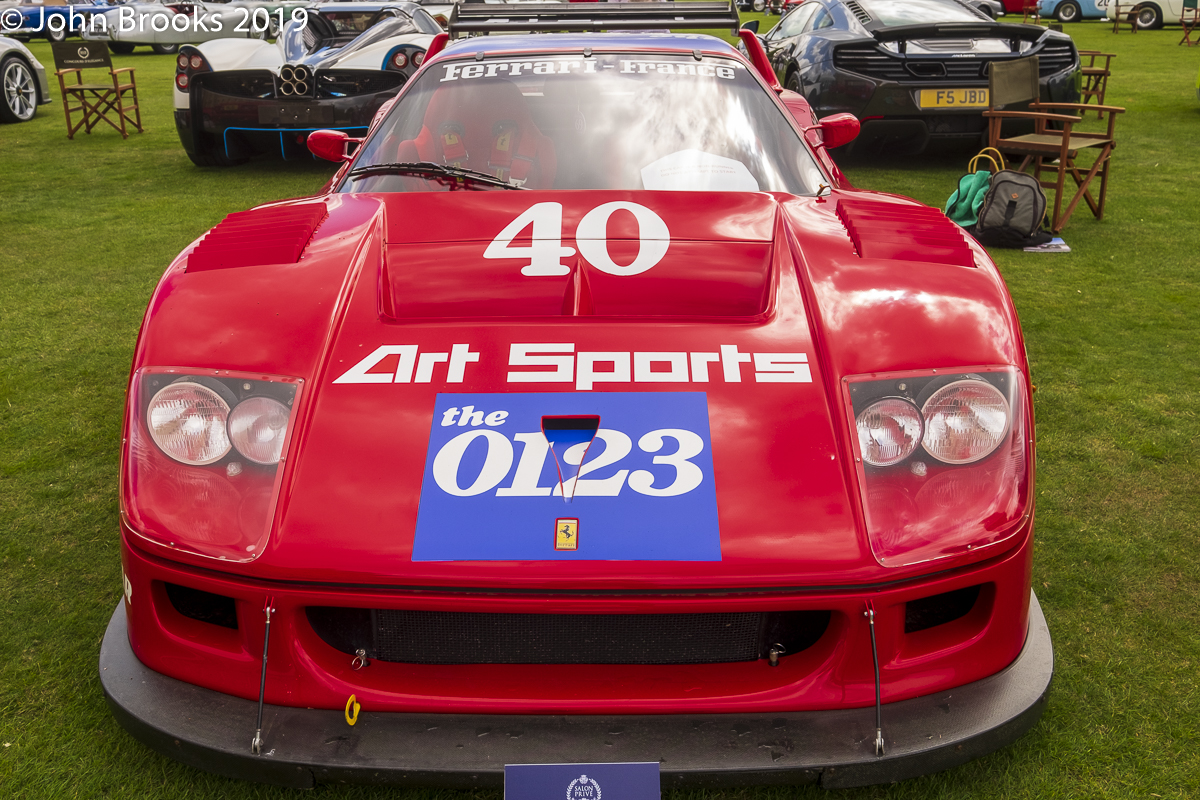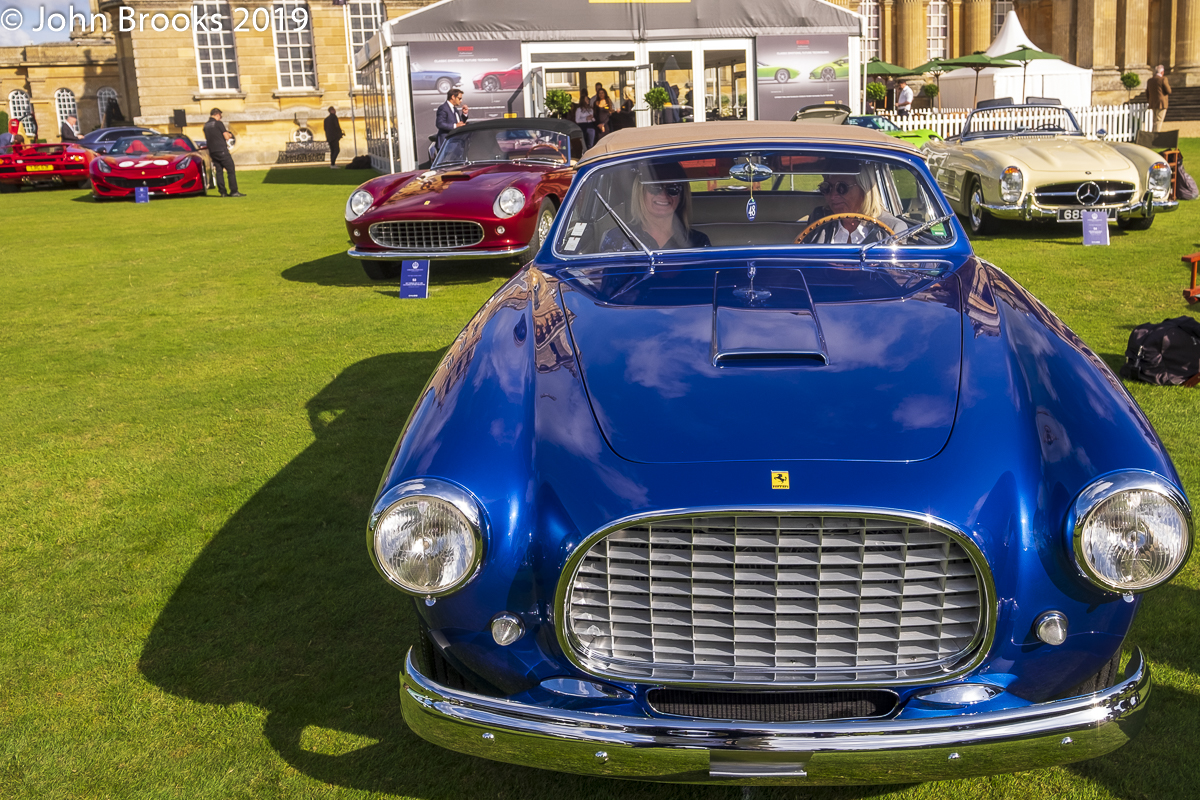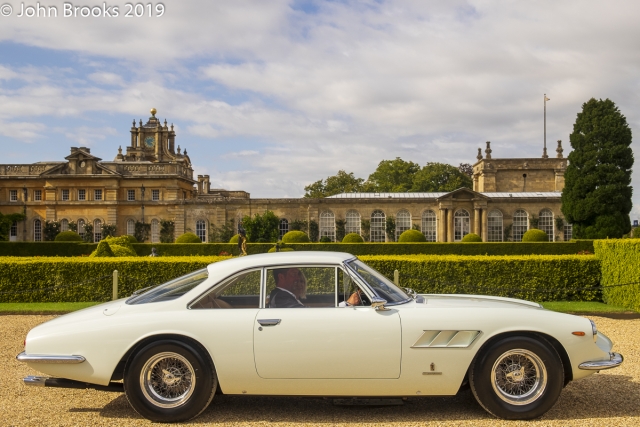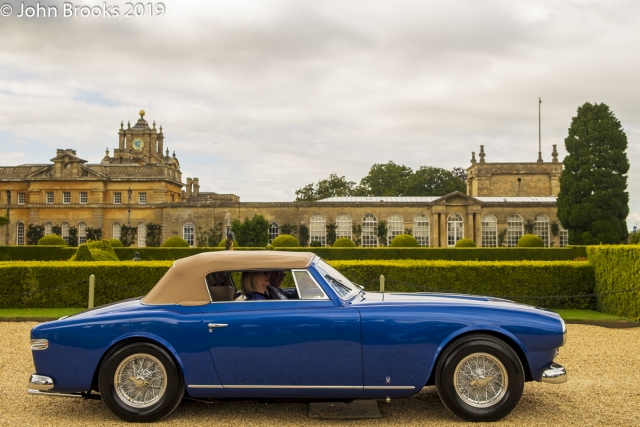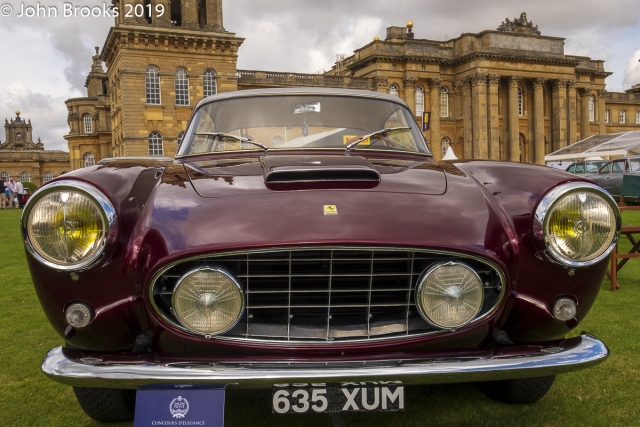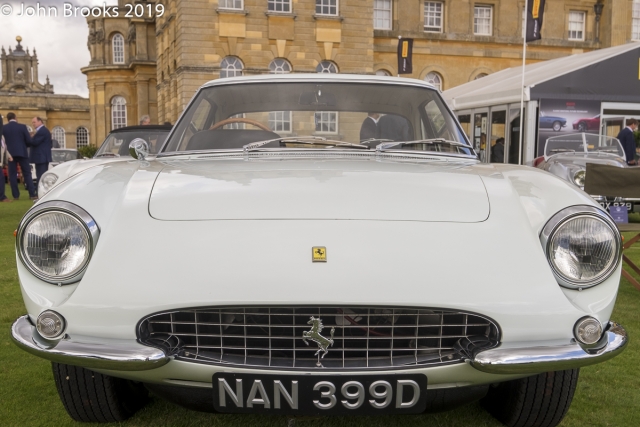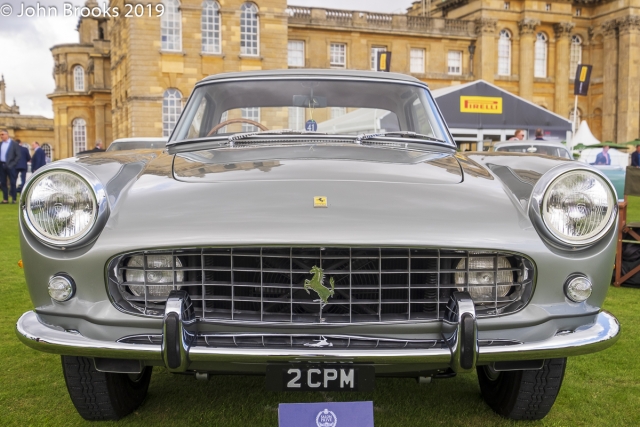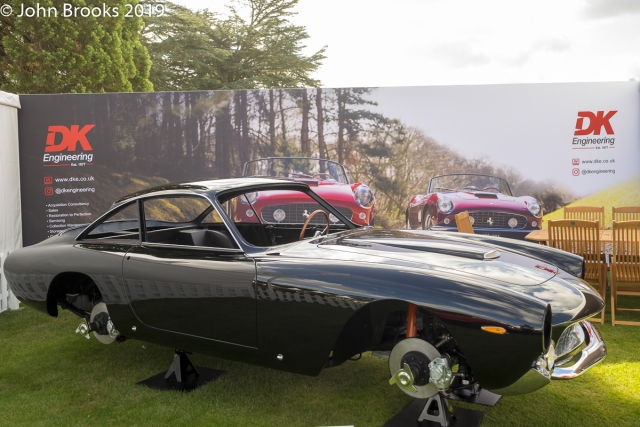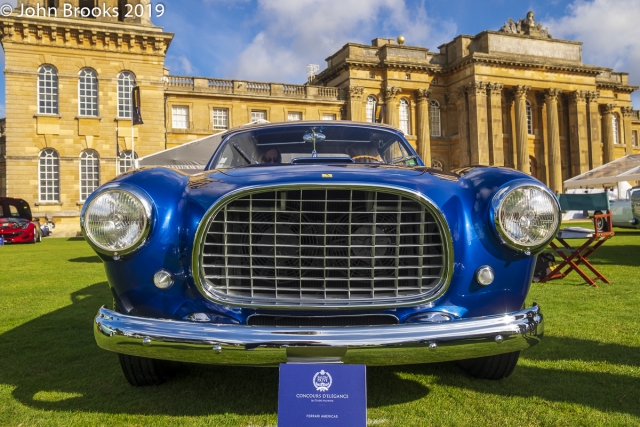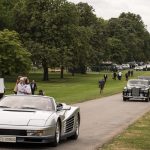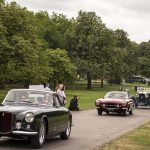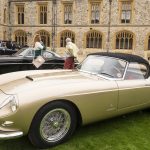
A late summer day spent at Blenheim Palace for Salon Privé was followed 24 hours later by a grey autumnal day, also in the company of fantastic cars, this time the venue was Windsor Castle. The reason for this was attending the 2016 Concours of Elegance, repeating its visit to Berkshire back in 2012. Using my Ferrari test what was the level of the show?

In a word, sublime. This Ecurie Francorchamps Ferrari 365 GTB/4 Competizione aka Daytona is typical of the rare and authentic gathering of Maranello’s finest seen in the Upper Ward. Chassis 16425 was the final Competition Daytona to built, car number five in 1973 and number fifteen overall. Jacques Swaters was the customer and, as was his tradition, his Ferrari was painted in a distinctive yellow or Giallo Fly.

The Daytona raced in two major international events in ’73, Spa 1000Kms, finishing 12th overall in the hands of Teddy Pilette and Richard Bond. A month later Bond shared a run to 20th place in the Le Mans 24 Hours with Jean-Claude Andruet.

The Daytona made its way across the English Channel where it has resided ever since, running in national events, usually with Mike Salmon driving. It is believed to be the only unrestored Competizione Daytona and is almost completely the same as it was leaving the factory.

Not all the 60 cars on display were completely unfamiliar to me, this unique Ferrari Testarossa Spider was built for none other than Gianni Agnelli, the President of Fiat, on the occasion of his 20th anniversary at the helm of the Italian industrial empire.

Indeed I had encountered this special car back in February at the Rétromobile and wrote about at the TIME

The Testarossa Spider was by no means the only car that was specially made for Agnelli by Ferrari. In 1955 he commissioned this famous Ferrari 375 America that made its first appearance at the Turin Show. The nose resembled a Facel Vega, the A-pillar is tilted forward, there are fins on the rear deck and a transparent panel in the roof.

Add in a red-green paint job and you have a striking car that attracts admiration when seen in person.

Almost as rare as the Testarossa Spider is this beast, the 288 GTO Evoluzione, dating from 1986. Just six of these fearsome contraptions were built by Michelotto in anticipation of the FIA Group B regulations being applied to the tracks as well as the forests. My previous POST gives a fuller account of why the FIA cancelled their own regulations leaving the Porsche 961 and the 288 GTO Evoluzione with nowhere to play, though the Porsche did make two appearances at Le Mans in ’96 and ’97.

Actually, according to Joe Sackey, the MAN when it comes to the 288 GTO, Ferrari dropped the 288 from the Evolution model so it should be referred to as GTO Evoluzione but hardly anyone pays attention to that.

The figures for the GTO Evoluzione are staggering considering what the opposition were doing at that point 30 years ago. Power of 650bhp meant accelerating 0-60mph in just 4 seconds and a top speed of 229.9mph was quoted, Mamma Mia!

Perhaps the most important role that the GTO Evoluzione played was in acting as a test mule for the F40 that would be launched the following year. To see one of these elusive wonders of the Maranello World in the flesh is truly impressive.

There are few cars that have an entire book dedicated to them, much less by a historian as respected as Doug Nye, but Ferrari 250 GT SWB, chassis #2119, is one of such a select group. The Ferrari was delivered to Rob Walker and Dick Wilkins in mid-1960 and Stirling Moss was scheduled to drive it at the Goodwood Tourist Trophy in August. This despite not being fully recovered from his serious injuries sustained in the Belgian Grand Prix two months earlier. Moss ignored the pain and put on a fantastic show to crush the opposition, with the performance passing into legend as Moss turned on the car’s radio to hear the BBC commentary on his race.

In an earlier book about the Ferrari 250 GT SWB, Nye found that Moss was really enthusiastic about the car. “It was quite surprising how good it was – a really comfortable Grand Touring car; with good brakes, a super engine and crisp gearbox, and unusual in that it would not lift its inside rear wheel despite that old-fashioned live axle……. quiet difficult to fault, in fact.”
Moss took two further victories that season and #2119 was sold on to Tommy Sopwith’s Equipe Endeavour who scored another three wins in 1961, with promising new-boy and future Ferrari Grand Prix driver, Mike Parkes, behind the wheel.

Several well-known owners followed for the Ferrari such as Neil Corner and Sir Antony Bamford till in 2014 #2119 was acquired by Ross Brawn, the legendary engineer who was an integral part of the successes of the Schumacher era at Ferrari. Subsequently Brawn ran a team under his own name and won the Formula One World Championships in 2009. Brawn GP was then purchased by Mercedes-Benz and has formed the foundation for their tremendously successful team that currently dominates F1.
For Brawn #2119 is a dream come true. “When #2119 came up for sale I decided it was such a unique car that I had have it as well; I had to muster everything I could to buy it. To me it’s as aesthetically perfect as you can get for a sports racing car of that era. The historical connection means a lot to me because when I drive it I think of Stirling.”

The Ferrari 250 GTO succeeded the SWB as Ferrari’s GT standard bearer and has now become the most valuable and desired car in the world. Just 39 examples were built and #3729 was ordered by John Coombs, the Jaguar dealer from Guildford, who was a prominent driver and entrant in the ’50s and ’60s.

The line up of drivers who got behind the wheel in the ’62 to ’64 seasons was pretty special, Graham Hill (in the year that he won his first World Championship) , Roy Salvadori, Richie Ginther, Mike Parkes and Jack Sears. A second place in the ’62 Goodwood Tourist Trophy, courtesy of Graham Hill, would be the highlight of #3729’s career.

Somewhere along the way #3729 was repainted red but the current owner had the distinctive off-white colour restored recently, and it is much the better for this.

A decade before the GTO, Ferrari were turning out very competitive racers such as this Ferrari 212 Inter Vignale Coupé. It proudly sports number 52 as running under that designation it finished first in the 1953 Coppa InterEuropa held at Monza and driven by the Ferrari agent for Milan, Franco Cornacchia.

A few weeks later #0237EU scored a class win in the Bologna-Raticosa Hillclimb. Subsequently the 212 was sold on to Venezuela and then to the USA, finally returning to Europe in 1986, since then it has become a regular in the historic racing scene.

Ferrari was not just about racing, the line of fast and luxurious Gran Turismos became another thread of the legend of Maranello. The Ferrari 500 Superfast has been compared to the Bugatti Royale and in the Tanner/Nye master-work Ferrari it was described as; “This was the ultimate in front-engined Ferraris for those who like the Rolls-Royce touch with their performance.”

The 500 Superfast was popular with royalty, The Shah of Iran ordered two, the Aga Khan and Prince Bernhard of the Netherlands each had one. Other notable owners that give the Rolls-Royce reference such substance included, Gunter Sachs, Otis Chandler, Barbara Hutton and Peter Sellers. It remains one of the most sought-after Ferraris.

One very special Ferrari that was on display at Windsor Castle is this gorgeous 250 GT SWB California Spider. What makes this example unique is that the first owner from Milan specified it with right-hand drive and it is the only example of the 57 cars built with this configuration. He wanted to race the car and felt that RHD would be the optimal arrangement. In fact he did compete in just one race, the Trofeo Pacor in ’62, finishing 5th.

Although the California Spider was not intended for competition both the LWB and SWB variants did race at a range of venues including Le Mans, Sebring and Targa Florio as well as club events and hill climbs. The best result for the SWB brigade was 12th overall for Allen Newman, Gaston Andry and Robert Publicker in the 1961 12 Hours of Sebring, widely regarded as the toughest endurance race of them all.

The 250 GT SWB California Spider attracted many owners from the creative arts, in France these included Alain Delon, Roger Vadim and Brigitte Bardot, Johnny Halliday and François Sagan. In the US Bob Hope, James Coburn, Barbara Hershey and Ralph Lauren all have enjoyed the pleasures of driving the California Spider. The jaw-dropping good looks and almost perfect proportions will have appealed to these stars of stage and screen, that and it being a Ferrari.
The Concours of Elegance has passed my Ferrari test with flying colours, the question is what will we find when the circus assembles again at Hampton Court Palace 1-3 September? My advice is to grab a ticket and go along, it is truly one of the great motoring displays.
Finally, on behalf of all who toil at DDC Towers, may I wish our readers a happy and healthy 2017.
John Brooks, January 2017


